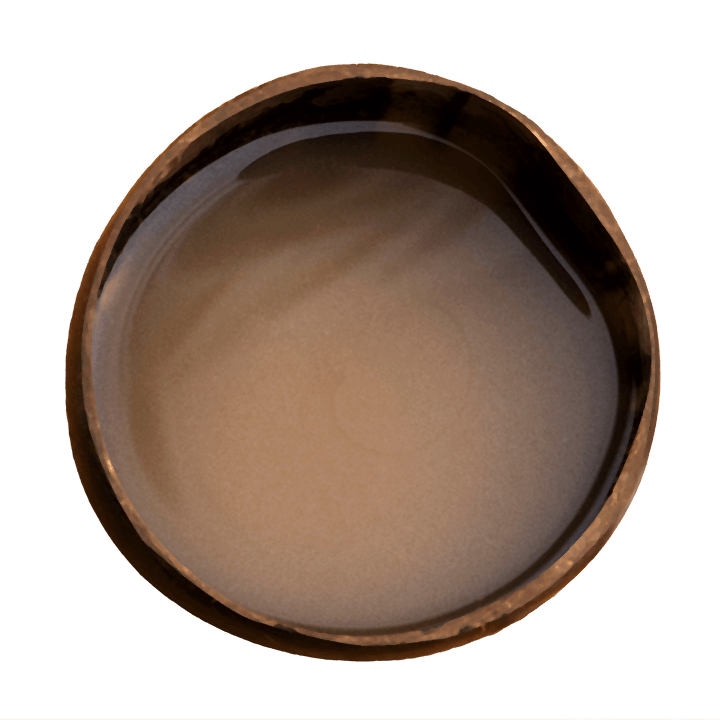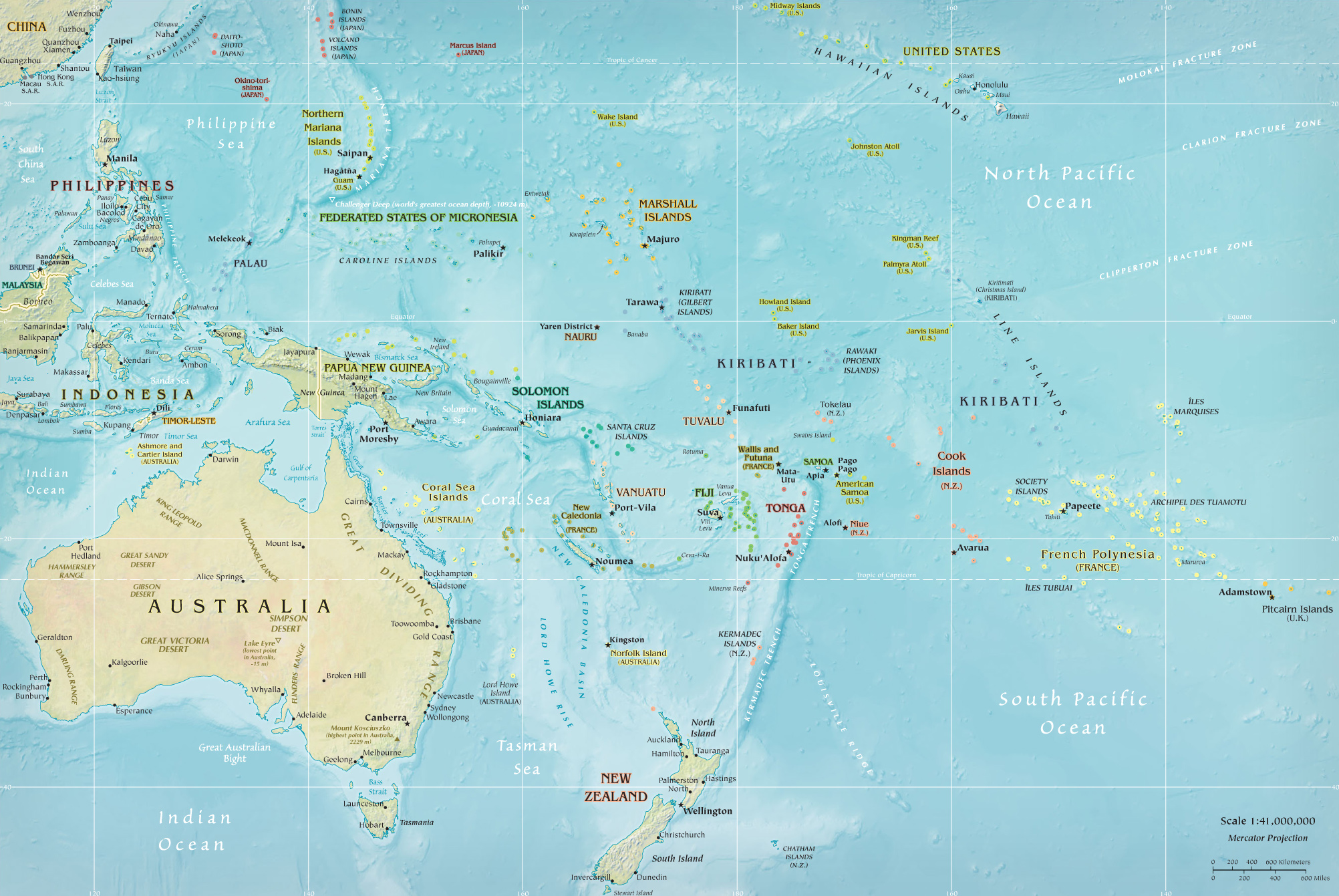What is Kava?
Kava, yaqona, awa, ava or sakau are all names used for this traditional plant (shrub) that grows in all parts of the South Pacific. The Kava Drink (tea) is a relaxing beverage using the roots and has been enjoyed in the South Pacific Islands for over 3,000 years. Kava is deeply anchored to island traditions and customs, as it is a drink that promotes happiness and peace in your mind, soul, and body.
Sourcing
We source our kava from several selected suppliers in remote island nations in the South Pacific including Vanuatu, Fiji, Hawaii, Solomon Islands, Tonga, and Papua New Guinea. All our suppliers are registered with the FDA. Our Kava is organically grown by small farmers without the use of chemicals, however, due to the remoteness it is not possible for official USDA organic certifications right now. Hawaii is the only location that grows Kava that has access to USDA inspections.
Quality
This is the most important part of our business. There is a lot of Kava on the market, a majority of which is supplied by people who only care about making a quick buck. Some suppliers work from their garages either on the islands or here in the USA. They have a polemic about whether the type of Kava is Noble or Tudei (two days). We can assure you that both Kava types are good Kava if used accordingly. That is why we test all our Kava batches and will certify the total lactones contained and the classification of the Kava as Noble or Tudei, so you know what you’re buying and drinking. All our Kava comes with a tracking number that will give you access to the Certificate of Analysis on our Kava Labs page. We only work with suppliers that we certify and that follow good manufacturing practices (GMP). We take annual trips to the islands and meet with all the suppliers and farmers individually, something most other Kava suppliers in the US don’t do. Another issue about quality is due to the shortage of Kava, and you will find a lot of suppliers on the islands who mix or sell stem powder with their kava roots in order to make money. Some also sell micronized Kava as instant Kava, which is not the same thing (See our descriptions below). Don’t be fooled; if the price is too good to be true, chances are it means you aren’t getting the best quality Kava available.
Farm trade and sustainability
All our Kava cultivars are sustainably grown and harvested rather than wild-crafted by not using chemical fertilizers or pesticides. Most Kava farms are very small, ranging from a few hundred to a few thousand plants, no more. Farms are made by clearing the small trees of the forest. The big trees that support the soil are left alone and used as shade, since Kava grows better under shade. After two crop cycles, the forest is left alone to grow back. Kava supports hundreds of thousands of families and local economy on these small islands.

Science
Every product we propose is rigorously tested in-house for chemotype and lactone and by third-party independent labs for USP food standard quality. We test all materials for microbiological, heavy metals, pesticides, as well as Kavalactone lineup, content and flavokavain levels.
The Kava has six major lactones. The combination of these lactones can give you different effects. Each Kava type has a different lactones percentage, which determines its classification as noble or Tudei. Noble is the preferred Kava for every day. Noble Kava is used for everyday drinking for its effect of melo melo and relaxing. Tudei is not an everyday Kava. It is used traditionally by only the chiefs and certain ceremonies. The effect lasts longer, sometimes up to two days, hence the name tudei. Respect the Kava, and the Kava will respect your body.
What can I expect it to do?
Kava is neither intoxicating, like alcohol, nor does it create restlessness, like coffee. It has a 3,000-year history of use as a safe and effective way to promote a state of mental well-being that is accompanied by marked physical relaxation. Expect to feel relaxed, at peace, and ready to socialize. But do not drink kava in a noisy and lighted environment. Kava is more appreciated in a calm and dark place. Rule of thumb: Use Kava as your last drink of the day.
How many should I drink?
We recommend that ½-lb make 1 gallon of kava. Those who are new to the Kava drink should start with 2-3 shells worth of Kava (one Shell = 4 FL 0Z) for their first experience. Kava has a reverse tolerance, meaning that the more frequently you consume it, the less it takes to achieve the desired effects.
Can I drive after drinking Kava?
Kava may cause drowsiness and may therefore temporarily impair your ability to drive. We do not recommend anyone operate heavy machinery or drive a motor vehicle after drinking Kava.
Can I drink kava if I am drinking alcohol or taking medication?
Please familiarize yourself with Kava by visiting our bookshelf to understand its risks and benefits and to make an informed decision if Kava is right for you. If you have any medical condition or are taking ANY medication. We recommend consulting your physician before drinking Kava. We do not recommend the use of Kava in individuals who are under the influence of drugs or alcohol.

DIFFERENT FORMS OF KAVA
Kava roots are available in many different forms on the market; many of which are sold right here at Kava Depot. Before we dive into the different forms of Kava, it is important to distinguish the two main types of Kava Roots.
Under the Kava plant, there is a network of roots that consist of two different types of roots. The thicker portion of the root system is known as the Basal Roots, or Chips, and is often lighter in color. The thinner portion of root system is known as the Lateral Roots, or Roots, and contrary to the Basal Root, is darker in color. (See picture above).
*The Basal Roots are the main portion of the root closest to the stem. These roots are high in starches.
*The Lateral Roots are the thinner roots that extend out beyond the canopy line of the Kava plant. These roots are low in starches but high in Kavalactones.
Whole Dried Kava Chips/Roots
When the roots are harvested, they are washed and either chopped into small sections and packaged, or bundled as whole roots and sold as is.
Fresh Green Kava (Whole or Paste) — FROZEN
These roots are harvested, cleaned, cut and packaged, or processed into paste form and packed. Both are frozen as soon as they are packed to preserve freshness.
Powdered Kava
After the Kava roots are cut into sections, they are ground down to a coarse powder.
Premium Powdered Kava
The majority of the Kava powder that we sell is Premium-grade. This means that the Kava powder is processed a second time to a finer scale, to be ready to use and for maximum extraction.
Micronized Kava
Micronized Kava is processed a third time to a micronized scale and is ready to use. Note: This is NOT Instant Kava.
Instant Kava
Instant Kava is processed using water-based extraction to remove all the fibers, strained, and dehydrated back to powder form. This Kava form is higher in kavalactones, still has some starches, making it ready to mix with water or any beverage.
Powdered Kava Extract
Kavalactones are literally extracted from the Kava Powder to make a concentrated powder. Extraction is made with ethanol extraction or CO2 to concentrate the Kavalactones, then mixed with maltodextrin and either freeze-dried or spray-dried.
Kava Extract Paste
The higher the concentration of Kavalactones, the more the Kava becomes like a paste. With Paste Extract, we are able to achieve an extremely high level of Kavalactones, up to 80%.
Vanuatu Kava
Vanuatu is a nation made up of about 80 islands, stretching about 1300 kilometers in the South Pacific Ocean. It is the 171st Largest Exporter in the World, with 100% of its Kava surplus exported all over the world. Per Vanuatu law, all Kava that is exported is required to be at least 5 years old, NOBLE, and organically grown using no pesticides or chemicals.
From Vanuatu:
| Basal Kava Chips | The Mother Root of the plant, cut into chips |
| Lateral Kava Roots | The Smaller Roots that extend beyond the Mother Root that search for nutrients for the Plant. Higher in Kavalactone content. |
| Green Instant 50/50 | A Blend of Premium GREEN Dehydrated Roots, consisting of 50% Basal Chips & 50% Lateral Roots. Processed to perfection to remove all fibers, making for easy mixing. |
In-House Blends:
| Black Label | A Blend of Premium GREEN Dehydrated Roots, consisting of 50% Basal Chips & 50% Lateral Roots. Processed to remove about 20% of all fibers. |
| Ceremonial Kava | A Perfect Blend of 70% Basal Chips & 30% Lateral Roots for the Everyday Kava Drinker. |
| Instant Ceremonial | An In-House Blend of 70% Basal Chips & 30% Lateral Roots, processed to perfection to remove all fibers, making for easy mixing. |
| Taboo | A Strong Blend of 50% Basal Chips & 50% Lateral Roots. |
| Traditional | A balanced blend of 70% Basal Chips & 30% Lateral Roots for the Kava Lover |
Fiji Kava
Fiji is a nation composed of the South Pacific made up of more than 300 islands. Kava has a long tradition in Fiji, where it is called yaqona, and is central to many native ceremonies and social functions.
From Fiji:
| Lewena Kava Chip | Fijian Version of Basal Roots; the Mother Root of the plant, cut into chips |
| Waka Kava Roots | Fijian Version of Lateral Roots; the Smaller Roots that extend beyond the Mother Root that search for nutrients for the Plant. Higher in Kavalactone content. |
Solomon Islands Kava
Solomon Islands is a nation composed of six large islands and hundreds of smaller islands in the South Pacific. Centuries ago, its warriors were notorious for headhunting; while headhunters are a thing of the past, the islands maintain the main of the “kastom” traditions, including growing and brewing kava.
From the Solomon Islands:
| Chief Basal Kava Chips | From the island of Malaita, the Solomon Island Chief Kava is delicious the mother root of the plant, cut into chips |
| Gold Basal Kava Chips | The Mother Root of the plant, cut into chips from the island of Isabel. |
| Kastom Basal Kava Chips | From the island of Temotu, the Mother Root of the Plant, cut into chips. |
| Chief Lateral Kava Roots | From the island of Malaita the Smaller Roots that extend beyond the Mother Root that search for nutrients for the Plant. Higher in Kavalactone content. |
| Gold Lateral Root Kava | From the island of Isabel the Smaller Roots that extend beyond the Mother Root that search for nutrients for the Plant. Higher in Kavalactone content. |
| Kastom Lateral Root Kava | From the island of Temotu the Smaller Roots that extend beyond the Mother Root that search for nutrients for the Plant. Higher in Kavalactone content. |
In-House Blends:
| Chief Kava | A Perfect Blend of 70% Basal Chips & 30% Lateral Roots for the Everyday Kava Drinker. |
| Chief Sota Kava | A Strong Blend of 50% Basal Chips & 50% Lateral Roots. |
| Gold | A Perfect Blend of 70% Basal Chips & 30% Lateral Roots for the Everyday Kava Drinker. |
| Gold Headhunter | A Strong Blend of 50% Basal Chips & 50% Lateral Roots. |
| Kastom | A Perfect Blend of 70% Basal Chips & 30% Lateral Roots for the Everyday Kava Drinker. |
| Kastom Kakamora | A Strong Blend of 50% Basal Chips & 50% Lateral Roots. |
Papua New Guinea
Located in the southwestern Pacific north of Australia, Papua New Guinea is composed of the eastern half of New Guinea and several island archipelagos. A culturally diverse nation whose inhabitants speak more than 850 different languages, many of its islands boast a long kava tradition. The kava grown in the north coastal province of Madang — where it is referred to as waild koniak (“wild cognac”) — is sought after for its flavor and potency.
From Papua New Guinea:
| Lateral Kava Roots | The Smaller Roots that extend beyond the Mother Root that search for nutrients for the Plant. Higher in Kavalactone content. |

